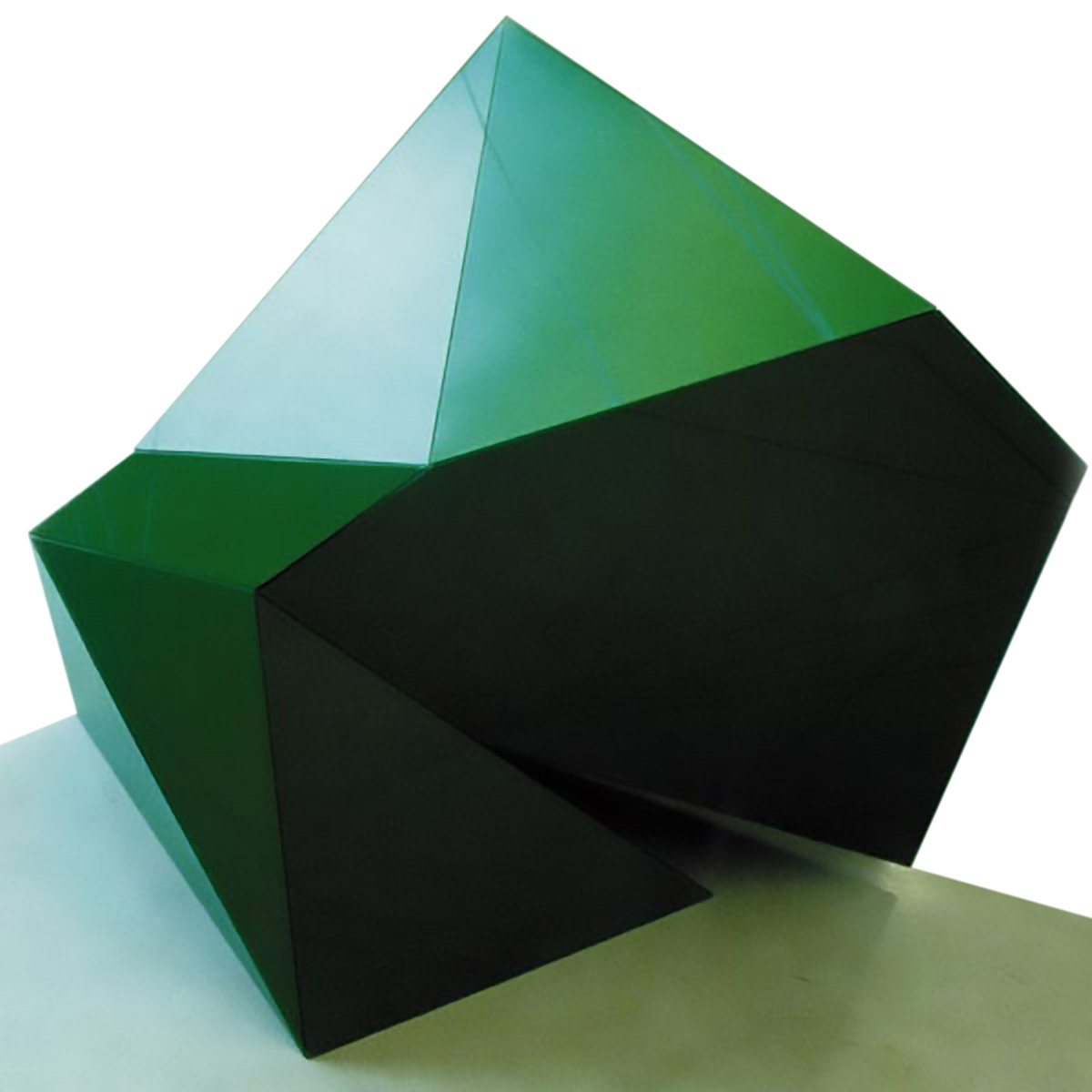
Exhibition at Museum De Zonnehof
In 1990 we approached Paul Coumans curator of Museum De Zonnehof with the proposal to organize a comprehensive exhibition and seminar on the state of art and architecture of today. We named the exhibition The Synthetic Dimension, indicating that we were in the process of building a new universe from its very essential and integer building blocks, as opposed to the then upcoming propagandists of Postmodernism and Deconstructivism, who favored a confrontational clash of materials and techniques. The idea of the Synthetic Dimension was intrinsically related to the concept of generating new worlds in 3d, based on our fascination for 3d worlds in virtual reality. This was the time that I started to sketch intuitively in 3d with the computer. Besides my own works Folded Volume and Hidden Line [36 unique silk screen prints on PVC] we selected works from different fields, from design [Swan chair by Pierre Paulin], art [Ville Cybernétique by Nicholas Schoeffer, Cetology by Frank Stella], digital driven architects [Das Binaere Haus by Manfred Wolff-Plottegg, Lego villa by Kas Oosterhuis], composers [Remko Scha], and an artist [Adri Huisman] growing peppers, which intrigued Joost Meuwissen, whom we invited to deliver the opening speech.
‘The Synthetic Dimension’, Opening words by Joost Meuwissen at the exhibition of the same name at De Zonnehof in Amersfoort, September 7, 1991
“Ladies and Gentlemen, twenty years ago, when a green pepper was exhibited in a museum, we were told that this change of context had made the pepper into something completely different. It had not only attained a different meaning. It had become a different kind of object. It was no longer meant to be eaten. People reacted as if it had become poisonous. The poison of the art of that era. Also there was Eat Art, an opposite based on the same way of thinking. And there were, but this was even earlier, the moldy cheese-sandwiches by Dieter Roth and the leftovers of a meal by Daniel Spoerri; all attempts to preserve European art as something original, an attempt, it seems, that in its form, in its iconography, already takes into account the possibility of failure. This failure did not become evident in the in itself apocryphal story of the greasy spot by Joseph Beuys that was cleaned up in the museum by the cleaning-person – because there was no intent and even in the most perfect institutions of art, such as here in the Zonnehof, mistakes are made – but the failure was almost purposely contained in the object because it took into account that the communication – the model for this art were the media, the mass-media, and it was for that reason that the art thought it should appear as if it was a war in Vietnam or a disaster at Chernobyl. Presently, if we see a pepper in the museum, we know that a pepper in the museum is a pepper and will be a pepper – and that is also the ratio of this exhibition. The things are not a simulation that replaces a reality, the model is not anymore the media that eventually generate meaning because it surpasses imagination but the model is the personal calculator, the computer, of which the possibilities that surpass imagination are put to use. It could be said that the desire of these objects or rather processes is contained in their state of becoming, not as a production process but as a process of consumption. And that process of consumption can be described as the esoterisation of banality. The museum, the media, the communication is a necessary ingredient but not a carrier of meaning anymore. They now only work selective. Not every pepper is exhibited in the museum. It has to have something to say. It is not so much given form as it is made malleable, as a free and open volume of which the voids differ from the inside to the outside as it grows. It is new, so it is beautiful. Art, architecture, music and design have traded the idea of the plus, the added value that cannot be appropriated, an idea that was linked to production, or lack of use, for the idea of consumption as a becoming desire. In yesterday’s NRC Handelsblad Rudi Fuchs writes about the art in Poland during the people’s democracy that everyone today finds so despicable: “We were in prison […] One chewed on a piece of bread until it was weak. Fingers were used to form this sticky dough into a sculpture. One looked at the sculpture, secretly showed them to some friends and then ate it. Such was our Polish art”. Well, leave out the “secretly” and replace it by open selection and we have a beautiful, for new, exhibition such as the one that is kicked off here today”.